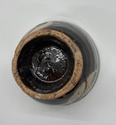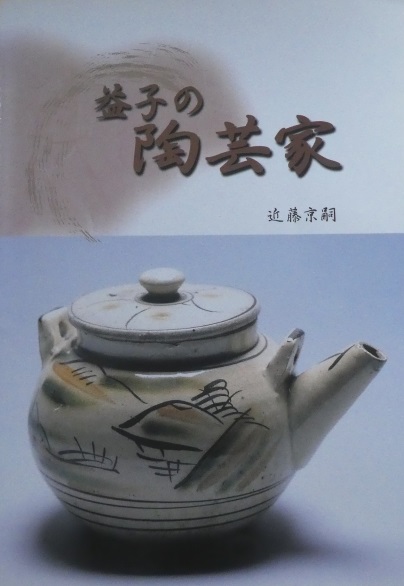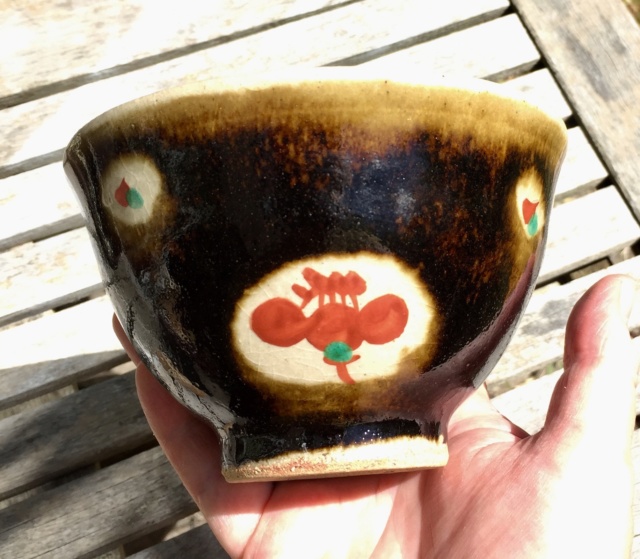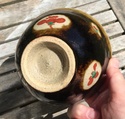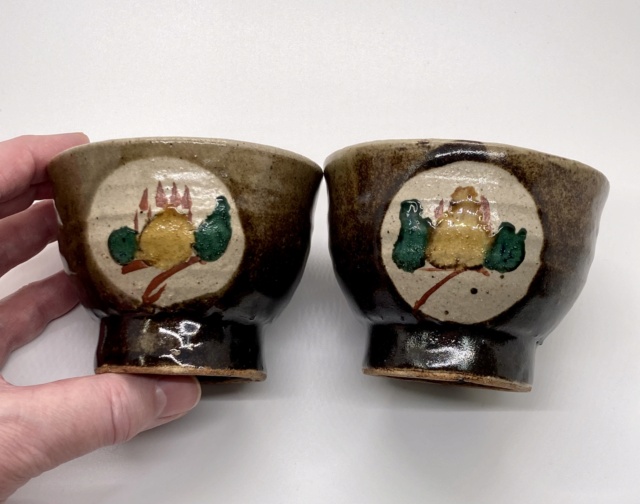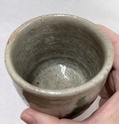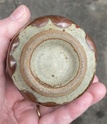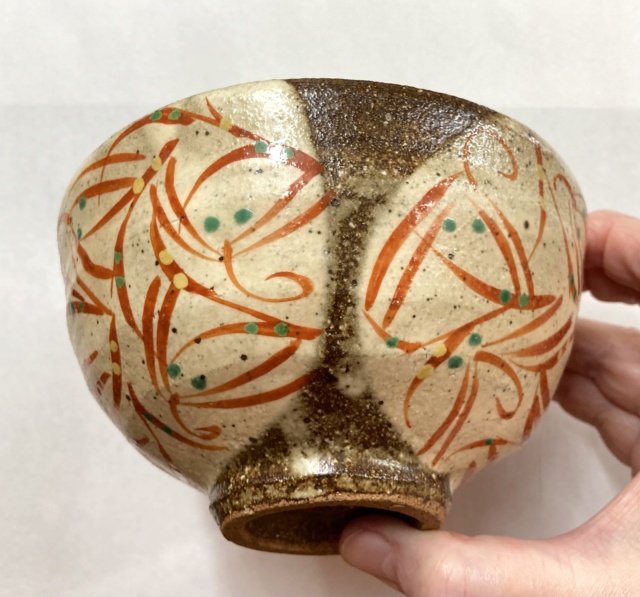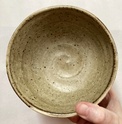Mashiko Pottery, Japan
+4
Celtic_Fan
Potty
dantheman
big ed
8 posters
20th Century Forum :: Pottery Identification / Research :: Far Eastern Pottery :: Japanese & Korean Studio Pottery
Page 2 of 2
Page 2 of 2 •  1, 2
1, 2
 possibly by Gouda (or Goda) Yoshimichi, Mashiko
possibly by Gouda (or Goda) Yoshimichi, Mashiko
Last edited by NaomiM on March 4th 2022, 3:09 pm; edited 2 times in total
_________________
Carrot cake is just fake cake
 Re: Mashiko Pottery, Japan
Re: Mashiko Pottery, Japan
_________________
Now you should know by now that Potty and I need to see your bottom - we're funny that way!
 Re: Mashiko Pottery, Japan
Re: Mashiko Pottery, Japan
I have gone through the book above, which I think dates from the late 1990s. it contains around 450 potters working in and around Mashiko at the time in various styles + 18 deceased potters that worked there.
For example: -
The teapot on the front of the book is in the Mashiko style before Hamada decided to set up his pottery there.
Other came or grew up in Mashiko and copied Hamada's style but then it became anything goes.
For example: -
The teapot on the front of the book is in the Mashiko style before Hamada decided to set up his pottery there.
Other came or grew up in Mashiko and copied Hamada's style but then it became anything goes.
_________________
Now you should know by now that Potty and I need to see your bottom - we're funny that way!
 Re: Mashiko Pottery, Japan
Re: Mashiko Pottery, Japan
_________________
Now you should know by now that Potty and I need to see your bottom - we're funny that way!
 possibly by Gouda (or Goda) Yoshimichi, Mashiko
possibly by Gouda (or Goda) Yoshimichi, Mashiko
Last edited by NaomiM on March 4th 2022, 3:09 pm; edited 3 times in total
_________________
Carrot cake is just fake cake
 Re: Mashiko Pottery, Japan
Re: Mashiko Pottery, Japan
I would agree, as I can't recall seeing the green/reddish brushwork combinations on other Japanese pottery or, at least, not often.
_________________
Now you should know by now that Potty and I need to see your bottom - we're funny that way!
 Yoshimichi Goda / Gouda Yoshimichi
Yoshimichi Goda / Gouda Yoshimichi
With reference to the two mashiko yunomi above, tentatively attributed to Gouda (or Goda) Yoshimichi....
Just looked through instagram where Tomoo Hamada (and others) have posted photos of his last Vintage and Seconds Sale and one section includes pots with this decoration and the name Gouda (or Goda) Yoshimichi amongst others, so a tentative attribution. Not much about him in English on Google, but there may be more if I could read in Japanese. He was a contemporary of Shoji Hamada and worked in Mashiko. Born 1910, died in Feb 2000.
There's a publication: GOUDA YOSHIMICHI (合田好道) "The World in an Earthen Vessel" (合田好道展 = Gouda Yoshimichi : 壺中の天地 /)


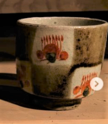
Bio, via https://mashiko.com/gouda-memorial/
Just looked through instagram where Tomoo Hamada (and others) have posted photos of his last Vintage and Seconds Sale and one section includes pots with this decoration and the name Gouda (or Goda) Yoshimichi amongst others, so a tentative attribution. Not much about him in English on Google, but there may be more if I could read in Japanese. He was a contemporary of Shoji Hamada and worked in Mashiko. Born 1910, died in Feb 2000.
There's a publication: GOUDA YOSHIMICHI (合田好道) "The World in an Earthen Vessel" (合田好道展 = Gouda Yoshimichi : 壺中の天地 /)



Bio, via https://mashiko.com/gouda-memorial/
Yoshimichi Goda was born in 1910 in Toyohama-cho, Mitoyo-gun, Kagawa Prefecture (currently Kanonji City), and moved to Tokyo in 1929 to aspire to be a painter.
After moving to Tokyo, he came into contact with antique art, and in 1942 he started a craft shop "Mon" that doubles as a coffee shop with his friend Yasubei Ito.
Moved to Mashiko in 1946 based on Shoji Hamada. In teaching Mashiko's pottery, he instilled knowledge of pottery and ideas of folk art in many aspiring potters.
Also, as an artist, he left behind not only pottery but also various works such as paintings and books, and became an indispensable presence in talking about the history of Mashiko.
1942: Started a craft shop "Mon" that doubled as a coffee shop with my friend Yasubei Ito. Introduced by Koyama Fujio, works by Kenkichi Tomimoto, Munemaro Ishiguro, Rosanjin Kitaoji, Toyozora Arakawa, Shoji Hamada and others are on display.
1946: Moved to Mashiko based on Shoji Hamada. Worked for Aka-e at the Endoji / Narii kiln. Hamada encourages her by seeing the work.
1945: Takayoshi Yanagi visits Mashiko with Bernard Leach. Meet Yanagi for the first time.
1952: While drawing oil paintings, he also teaches several kilns such as Daisei Kiln and Tsukamoto Kiln.
1974: Moved to South Korea with Yasuo Wada and opened a Gimhae kiln in collaboration with Mr. Kim, a Korean.
1977: Solo exhibition "Gimhae Kiln / Yoshimichi Goda Ceramics Exhibition" (Shinjuku / Keio Department Store)
1978: Solo exhibition "Gimhae Kiln / Yoshimichi Goda Exhibition" (Hiroshima / Fukuya Department Store)
1980: Leave Gimhae and return to Mashiko.
1981: Established Goda Pottery Research Institute with the help of several volunteers from Mashiko. Made pottery with Yasuo Wada.
1983: Group exhibition "Aida Pottery Research Institute Association" (Utsunomiya / Seibu Department Store / Mashiko / Gallery Jonaizaka)
1990: Group exhibition "10th Anniversary of Goda Pottery Research Institute" (Mashiko / Gallery Kurodo)
1993: Published "Yoshimichi Goda Works". Solo exhibition "Commemoration of publication of works" (Utsunomiya / Seibu Department Store)
1994: Received the Marronnier Cultural Award. "Yoshimichi Goda Exhibition" (Mashiko / Ceramic Art Messe Mashiko)
1995: Tochigi Prefecture Person of Cultural Merit. Solo exhibition (Mashiko / Gallery Kurodo)
1996: Solo exhibition (Shibuya / Beniya folk art store)
1998: Solo exhibition (Mashiko / Gallery Kurodo)
1999: Held "Yoshimichi Goda Exhibition" (Kagawa Prefecture / Marugame Hirai Museum) Received the Minister of Education, Culture, Sports, Science and Technology Award for Regional Cultural Merit.
February 6, 2000: Deceased
2010: Held "Do you know Yoshimichi Goda" commemorating the 100th anniversary of birth (Mashiko Museum of Ceramic Art)
Last edited by NaomiM on March 4th 2022, 3:15 pm; edited 3 times in total
_________________
Carrot cake is just fake cake
 Re: Mashiko Pottery, Japan
Re: Mashiko Pottery, Japan
The first tea cup had the distinctive yellow, which I only found in the image above with the female potter.
_________________
Now you should know by now that Potty and I need to see your bottom - we're funny that way!
 Re: Mashiko Pottery, Japan
Re: Mashiko Pottery, Japan
From looking at your information, I think the second bowl might be by Yoshimishi but the 3 pieces to me look to have been made by different hands.
_________________
Now you should know by now that Potty and I need to see your bottom - we're funny that way!
 Re: Mashiko Pottery, Japan
Re: Mashiko Pottery, Japan
The plate in the 1st photo is by Gouda Yoshimichi. The plates in the front of the 2nd photo I believe are also by Yoshimichi based on one of his on the gouda-memorial website. Most of the items behind those plates have the same decoration as my teabowls, and some share attributes with the front 3 plates, and I think the yunomi in the 3rd photo is by Yoshimichi (it was one of three yunomis before I edited it). The other names on Tomoo Hamada's post were family members, but also 'vintage mashiko', so while I'm fairly sure they are by Yoshimichi I cant be 100%
_________________
Carrot cake is just fake cake
 possibly by Gouda (or Goda) Yoshimichi, Mashiko
possibly by Gouda (or Goda) Yoshimichi, Mashiko
Last edited by NaomiM on March 4th 2022, 3:11 pm; edited 1 time in total
_________________
Carrot cake is just fake cake
 Re: Mashiko Pottery, Japan
Re: Mashiko Pottery, Japan
studio-pots wrote:From looking at your information, I think the second bowl might be by Yoshimishi but the 3 pieces to me look to have been made by different hands.
I am referring to the 3 individual pieces that you have posted before the images from Tomoo's Instagram account.
_________________
Now you should know by now that Potty and I need to see your bottom - we're funny that way!
 Tsukamoto Gama, Mashiko
Tsukamoto Gama, Mashiko
Last edited by NaomiM on May 1st 2023, 8:19 pm; edited 1 time in total
_________________
Carrot cake is just fake cake
 Re: Mashiko Pottery, Japan
Re: Mashiko Pottery, Japan
New Hamada-gama Yunomi from Mashiko, Japan
Currently watching a BBC4 film about Tomoo Hamada and Mashiko pottery and he says the clay there doesn’t contain much iron and has a higher amount of sand so it doesn’t have a particularly strong elasticity.
He says the persimmon glaze (as shown on the Yunomi posted below this one) is only found in Mashiko

Currently watching a BBC4 film about Tomoo Hamada and Mashiko pottery and he says the clay there doesn’t contain much iron and has a higher amount of sand so it doesn’t have a particularly strong elasticity.
He says the persimmon glaze (as shown on the Yunomi posted below this one) is only found in Mashiko

Last edited by NaomiM on September 22nd 2024, 1:55 am; edited 5 times in total
_________________
Carrot cake is just fake cake
 Tagami Isamu, Mashiko
Tagami Isamu, Mashiko
Sold as Tagami Isamu





Tagami Isamu (四代目 田上勇 Isamu Tagami) was born in 1947 in Mooka, a village neighboring to Mashiko. He married into the Sudo family and apprenticed under Sudo Takeo. He was originally trained as a Japanese chef and had his own restaurant before embarking on a career in pottery, giving him a unique perspective on functional wares. He is currently the 4th-generation head of Hinatagama, founded in Mashiko by Sudo Yujiro in the Meiji Period (1868-1912.)
His work has won awards in Prefecture and National ceramic exhibitions as he continues his work in the use of traditional and local Mashiko clay and glazes, much in the same way that his father’s teacher, Hamada Shoji, did. Hinatagama (Hinata Kiln) was established in Mashiko by Sudo Yujiro during the Meiji Period (1868-1912.) Sudo Yujiro was a potter at the Jishoji-yaki kilns in Gumma Prefecture. Production at the Jishoji-yaki kilns had declined at the turn of the century and many potters relocated to Mashiko around 1905. In the kiln’s 2nd generation, under Sudo Yasutaro, there was considerable growth in Mashiko’s pottery industry and Hinatagama was a large kiln employing several craftsmen..
Yasutaro’s son, Takeo, and Hamada’s 3rd son, Atsuya, were close friends who played together daily. Takeo eventually became an apprentice of Hamada Shoji, who by this time had been designated a National Living Treasure, and worked at the Hamada kiln. Afterwards, Hamada helped Takeo establish his own kiln directly in front of his own (the present-day site of the Hamada Sankokan Museum) and this is still the current site of Hinatagama today.
Continuing as the 3rd generation of his family potting in Mashiko, Sudo Takeo (1931-1998) gained considerable recognition for his work as a Mashiko potter; representing Tochigi Prefecture abroad, having numerous exhibitions in Mashiko and Tokyo, training several future generations of Japanese and International potters, and having his vase featuring the traditional Mashiko kaki (persimmon) glaze presented to Crown Princess Masako in 1993.
Hinatagama is currently operated by 4th and 5th generation potters, Tagami Isamu (Sudo Takeo’s son-in-law) and Tagami Munetoshi (grandson of Sudo Takeo,) who continue not only the pottery traditions of their family, but also the tradition of folk pottery in Mashiko.





_________________
Carrot cake is just fake cake
Page 2 of 2 •  1, 2
1, 2
20th Century Forum :: Pottery Identification / Research :: Far Eastern Pottery :: Japanese & Korean Studio Pottery
Page 2 of 2
Permissions in this forum:
You cannot reply to topics in this forum

